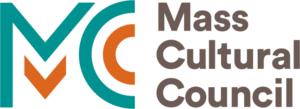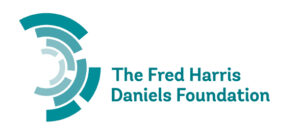The Roderick Camelia Latin-Jazz Trio
Mechanics Hall [Worcester]
Event info
| Date: | May 11, 2022 |
|---|---|
| Time: | 12:00 pm |
| Location: | Mechanics Hall |
| Address: | 321 Main Street Worcester |
Details
“I was born into a musical family on the island of Curaçao, a former Dutch colony in the Caribbean. My father was a well-known trumpet player and arranger, and all my brothers and sisters played an instrument or sang. Since all my older brothers played the guitar, there were always guitars lying around our house. At the age of 5, I picked one up, and my oldest brother, Alcides “Ido” Camelia, became my first teacher; he taught me how to play my first song: “My Bonnie (Lies Over The Ocean)”.From that point on I continued to learn on my own by watching and copying what my older brothers were doing.
I finished elementary school in 1969 and was accepted into Peter Stuyvesant High School to pursue the education of “V.W.O.” (from the Dutch “Voorbereidend Wetenschappelijk Onderwijs” = “Pre-university Education”), the highest level of secondary schools in the Dutch system that Curaçao had.During my 4th school year, I received my first opportunity to join a band: “Fire, Smoke & Ashes”, with Michael Rivers (lead guitarist), Carlos Joseph (singer), Russ Henry (drummer), Waldi Room (conga player, r.i.p) and later Earl Schalmein (keyboard player). “Fire Smoke and Ashes” was a hard-rock group from my neighborhood, that played covers of groups like Jimi Hendrix, Grand Funk Railroad, Led Zeppelin, Deep Purple, and others. The group needed a bass player and since they already had the bass, they asked me to play it, even though I had never played bass before. Luckily, since I was already a guitar player, the bass turned out to be easier, and I was able to learn to play it in a relatively short period of time, and so was able to do the required job. And that was the beginning also of the bass guitar becoming my second instrument, which I still play today.
In 1979 I was finally ready to make up my mind and chose to kill 2 birds with 1 stone: I decided to study “music pedagogy” (music education to prepare music teachers) in Bogotá, Colombia, at the “Universidad Pedagógica Nacional” (National Pedagogic University); and where I could at the same time also continue my yoga practice, since the “guru” (master) of my Yoga teacher was residing and had his “ashram” (temple) there. And by deciding to study to become a music teacher, I was at the same time also following my father’s advice of studying a more “secured” profession. (School teaching was an important and well-paid profession in Curaçao due to the Dutch educational system that Curaçao had.)
While in Colombia, I played my first jazz gig, but as a bass player, and became more aware of the high demands of this American art form. While attending college, I decided to organize jazz studies with college classmates and other friends with similar interests. The goal was basically: to learn to improvise; and I was back on the guitar. Antonio Arnedo was on saxophone, Rafael Leal on drums, on bass Omar Baracaldo, and a Dutch trombonist Tom, whose last name I can’t remember at this time. After giving a demonstration at my university, of the work we had been doing with this jazz study group, and which was very well received, I became determined to delve deeper into this American art form, especially the improvisational aspect of it. I also became a regular guitarist in the jazz quartet of the Colombian keyboard player Jorge Eduardo Lalo Velosa, with whom I performed for a long time. And while in Colombia, I played jazz on and off with several other musicians, of whom Marco Antonio Ramirez is the only other name I still remember (because I reconnected with him on Facebook).
While doing my last semester at the university, I applied for an extension of my scholarship/loan to pursue jazz studies at a pioneer and world-renown jazz school in the USA: Berklee College of Music. My application was approved and after graduating in December 1983 from the university, I was in less than 2 months on my way to Boston Massachusetts, where I arrived in February of 1984. At Berklee I studied for 6 1/2 years (I had many musical interests), taking courses from the guitar department, arranging department, songwriting department and graduated with a diploma in “Professional Music.” (I chose the diploma program because my interests were only in music, not in the Humanities which I had already studied in Colombia, but for which Berklee didn’t want to transfer the credits, due to minor differences in the titles.
I was also fortunate for having been accepted to receive private lessons with William Leavitt himself, the Chairman of the Guitar Department and author of many of Berklee’s guitar instructional books. (To study with him, you had to first fill out a written application and then wait to see if he would approve it.
After finishing Berklee in 1991, I became very interested in putting this study theory and techniques into practice teaching music, and so chose private teaching as my first musical activity after Berklee. I also attempted to start a Latin jazz group around that same time, but quickly realized that doing both things was going to be too much work for 1 person if I wanted to do each one well, so postponed that idea for later.
But I still ended up performing as a sideman with many different groups, among others: La Nueva Era (merengue), Supercombo La fuente (cumbia), Souvenir (calypso), Jorge Arce and his group Humano (salsa & plena), The Jazz Trio (swing), Vox Pop (polyphonic poetry), Bala Tounkara (West-African music) and others. I also recorded for several artists during this period of time: Ramiro Mendez (Cape Verdean music), Grupo Chévere (merengue and bachata), Rumbafrica (soukous), Sali Oyugi (r.i.p., Kenyan music), Mondo Sweetie (Cuban and Spanish rumba flamenca), and The Three Kings (hip hop). As you can tell, I’m able to perform in many styles of music, as most Curaçaoan musicians are, because we grew up listening to a wide variety of music.
We listened to American music: Rock, soul, funk and rock ballads; Latin music: salsa, merengue, cumbia, bolero, chachacha, rumba; West-Indian music: calypso, soca, rock steady (a precursor of the reggae), reggae; and we also had our own folkloric rhythms of course: tumba, sehu, tambu, dansa, salsa antiyana, and the Curaçaoan waltz and mazurka. I was familiar with all these styles. What also helped increase my familiarity with many of these styles was the fact that my father allowed me to stay up at night watching his group, Combo Aristo, rehearse at home (I must have been around 6 or 7 years old). They played many styles of music: guaracha [now called “salsa”], merengue, cumbia, boleros, ballads, tumba [a rhythm from Curacao], and bossa nova.
In 2001, I received a call from an old friend asking me to perform at an art exhibition of a Mexican painter, Jose Cedillo. I accepted and took this as an opportunity to re-start my Latin jazz group, which I originally named “The Camelia Group”. For that occasion, I used a quartet consisting of guitar (myself), keyboard (Rebecca Cline), bass (Tal Shalom Kobi), and drums (Martin Wernert).
But it wasn’t until 2006 that the group began to move more steadily. Later, I changed the name to “The Camelia Latin-jazz Band” to better reflect the style of music I was playing. I also decided to take out the drum set and replaced it with Latin percussion only: congas, bongos, timbal, tambora and/or güira.
Additionally, I changed the repertoire by taking out the calypso and samba rhythms and decided to continue using only the 5 main Latin styles, namely: salsa, merengue, bachata, cumbia, and boleros. This way I could have a wider choice of available Latin percussion players because most of them were not familiar with the rhythmic patterns of the samba and calypso, and so I couldn’t use them for these styles. The musicians I have used the most for this group are:
– on keyboard: Soohee Moon (South Korea), Mihoko Abe (Japan), Hanna Noh (South Korea), Ai Yamashita (Japan), and Rina Kohmoto (Japan);
– on percussion: Arioto Amado Rodriguez (Dominican Republic), Ruben Vazquez Sr. (Puerto Rico), Ruben Vazquez Jr. (USA), Luis Shephard (Dominican Republic), and Santiago Hernandez (Cuba);
– on bass: Tal Shalom Kobi (Israel), and Gerry Rollock (Trinidad).
And to make the group adjustable to different scenarios, I created a trio, quartet, quintet, and sextet version of it. The trio consists of a guitar, a keyboard (which also does the bass), and 1 percussion.
But since many would get up and dance to these Latin styles, which then would limit us in our jazz solos, I decided to create an additional band, especially for dancing. I based the repertoire on well-known Latin classics (oldies), and called the group the “Camelia Latin Classics”.
It currently exists as a quartet, quintet, and sextet. The full band consists of 3 percussion players, bass, keyboard, and saxophone. I’ve been the manager and music director of all these groups ever since.”
Brown Bag Concert Series is Sponsored By:

